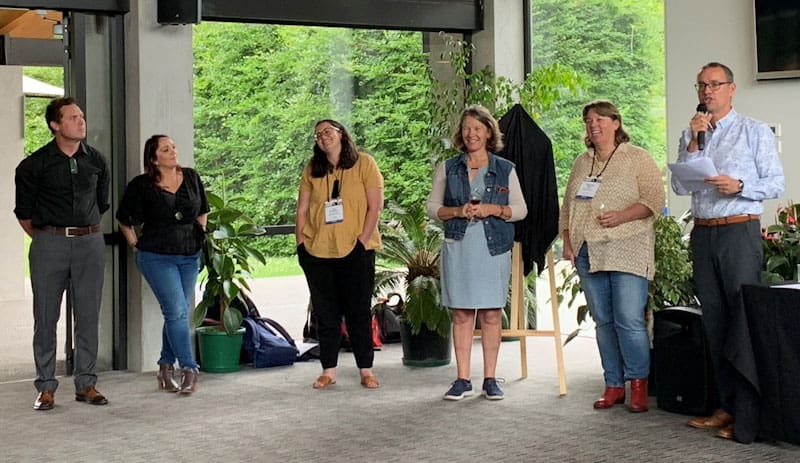The 80th journal issue featured 14 articles that either drew from, or showed the value of, mātauranga Māori and kaupapa Māori in ecological research. The aim was to highlight how essential this knowledge system is in preserving and restoring te taiao (the environment) in Aotearoa.
Guest Editor-in-Chief Dr Priscilla Wehi (Manaaki Whenua – Landcare Research) says in the 60-odd years before this issue, only a handful of papers on mātauranga Māori had been published in the journal.
“I’m delighted that we can showcase research that is relevant and important for Māori communities. It’s exciting to present work from emerging as well as experienced researchers, many of whom are Māori.”
The special edition brought together 64 researchers and their supporting communities. Of the 13 leading authors, almost half were early-career researchers.
Guest editor and lead author of one of the articles Dr Shaun Ogilvie (Ngāti Whakahemo, Ngāti Pukeko) says in his experience, mātauranga Māori and ecological [Western] science are “very much complimentary, so there is a lot to be gained by working at the interface.”
Shaun and 11 other researchers looked at the potential of using the compound tutin in mammalian pest control in Aotearoa.
Tutin is the active toxin found in the native plant tutu (Coriaria arborea), which is well-known for poisoning stock and sometimes honey, when bees visit the plants.
Shaun’s study, co-designed with Tūhoe researchers, investigated if tutin could be a viable alternative to current pest control poisons such as compound 1080.
They found the toxin was not only effective, but resulted in a “quick, humane death compared to other existing rodenticides.” The paper recommends field-testing to follow-on from their laboratory experiments.

Looking forward
Shaun says one of the main aims of publishing this journal issue was to challenge the “Ecological fraternity” to continue this type of transdisciplinary research.
“But, as Craig Pauling pointed out at the launch, the real challenge is that they actually take up the challenge!”
Associate Professor Cate Macinnis-Ng (University of Auckland) was the president of the New Zealand Ecological Society (NZES) when the idea for the issue was conceived.
She says the NZES council were very pleased to support the initiative and hope it leads to more work of this nature being published in NZJE.
“We are grateful to the guest editorial team and our sponsors for their work and support. We’re also glad so many authors chose to submit papers to the issue so we could showcase some of the brilliant work being done at the intersection of mātauranga Māori and ecology,” Cate says.
The BioHeritage Challenge was proud to support both the creation of the journal and the launch event, along with Manaaki Whenua – Landcare Research, Te Pūnaha Matatini and The Centre for Biodiversity and Biosecurity.
Posted December 2019
